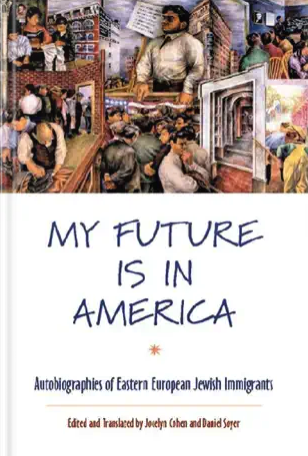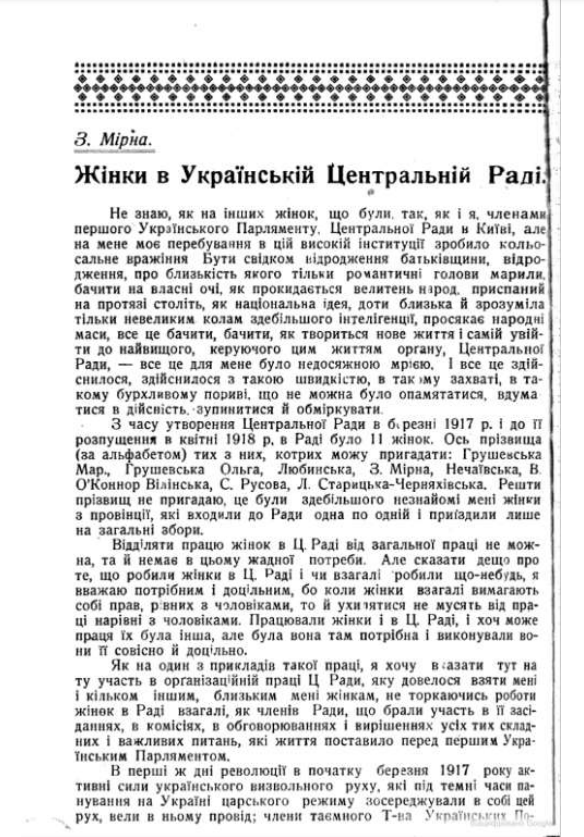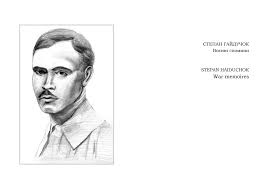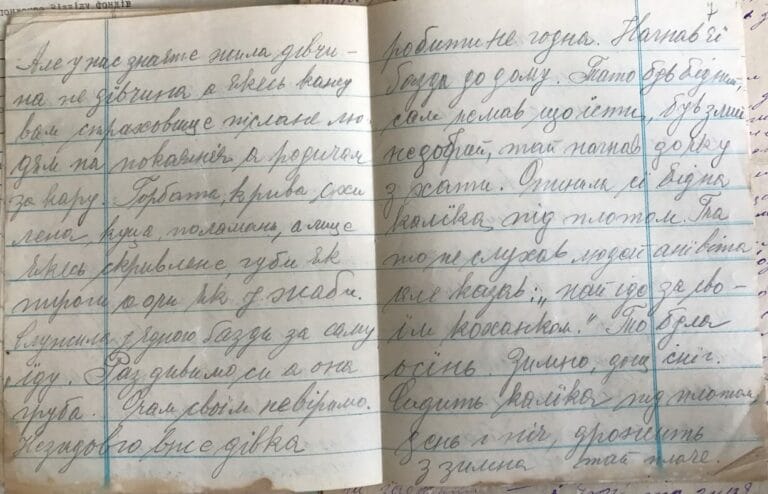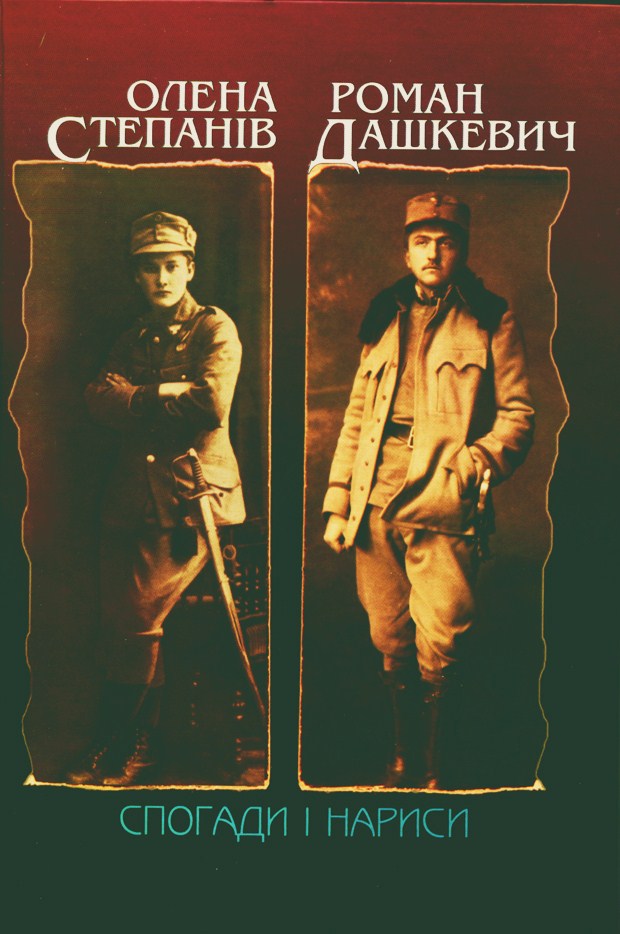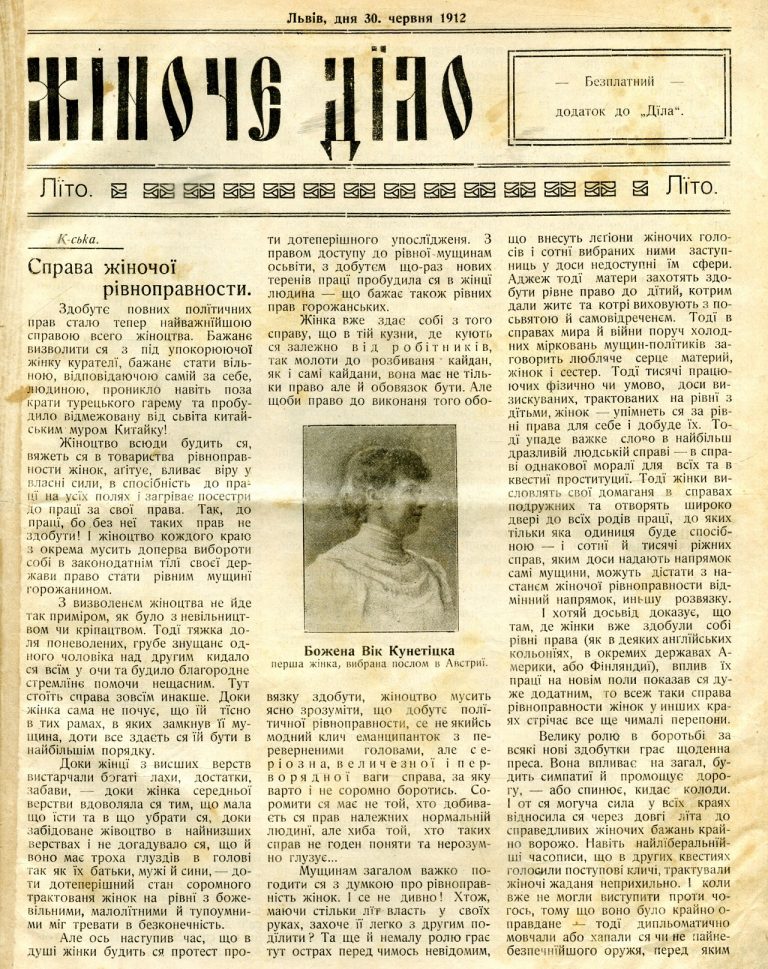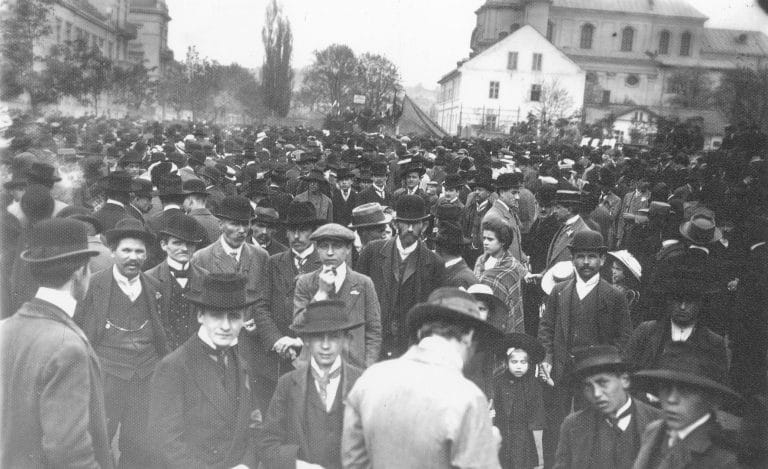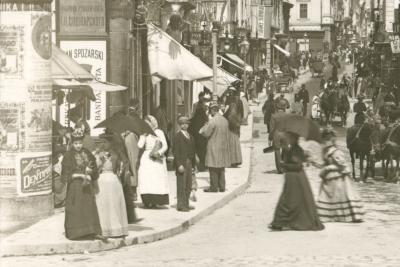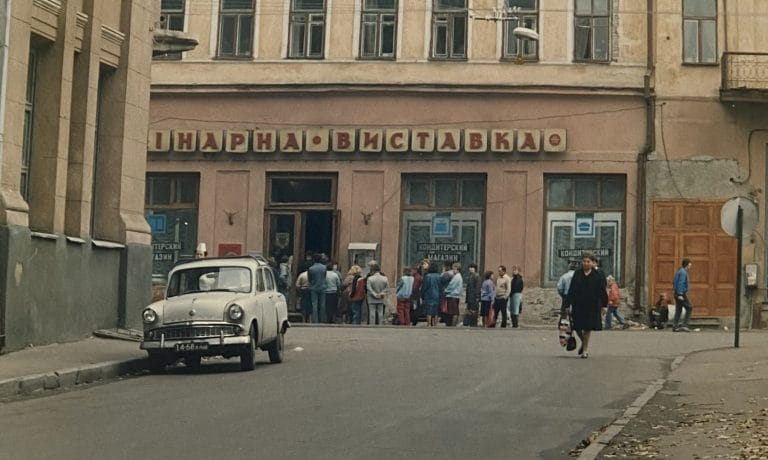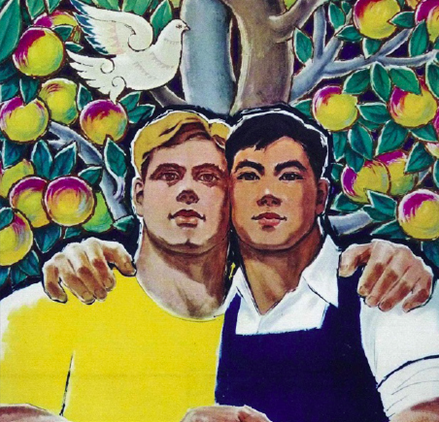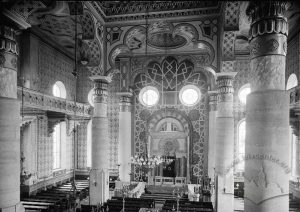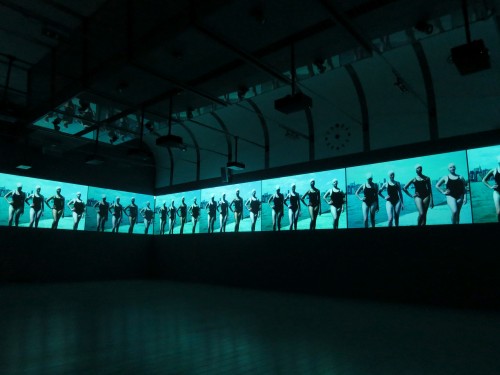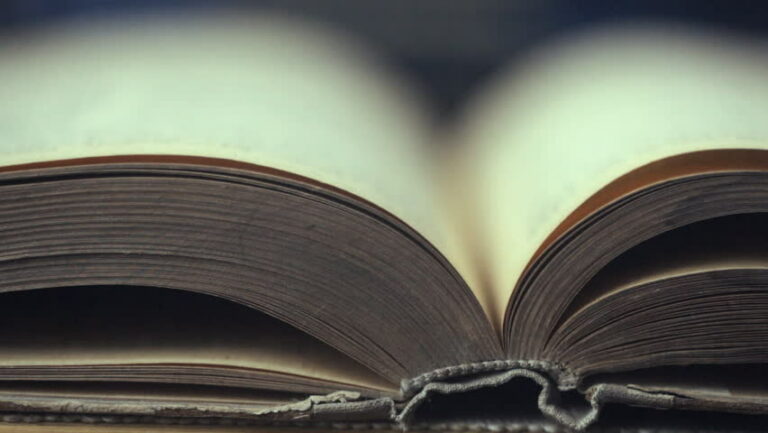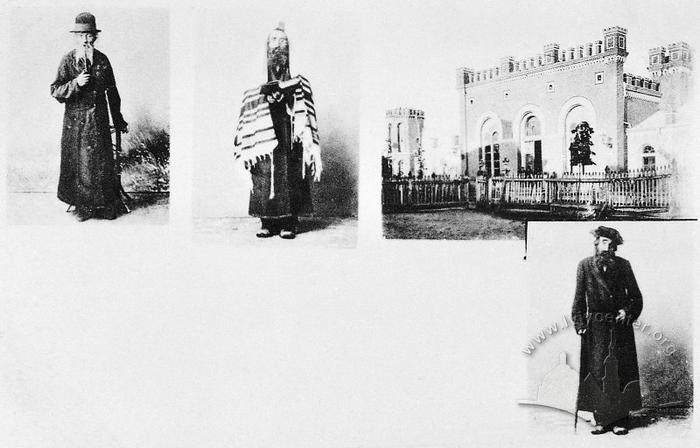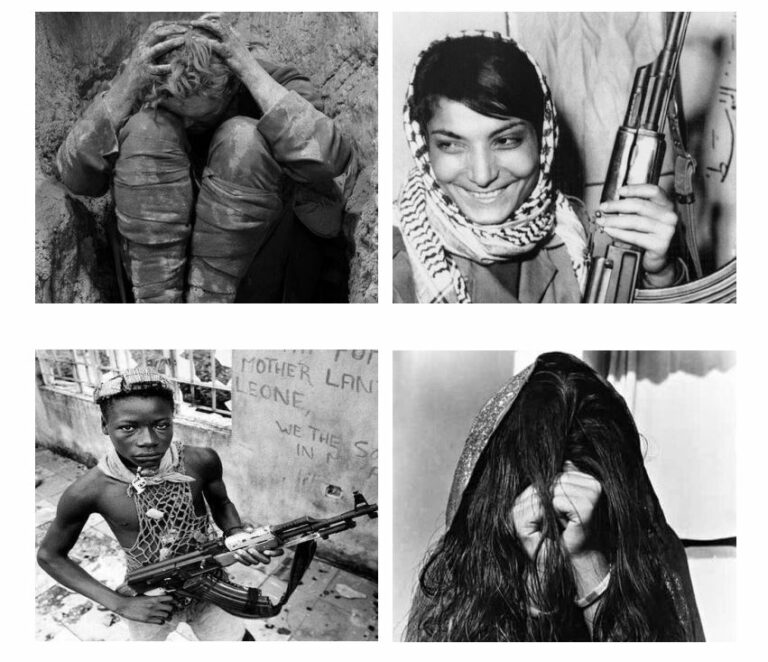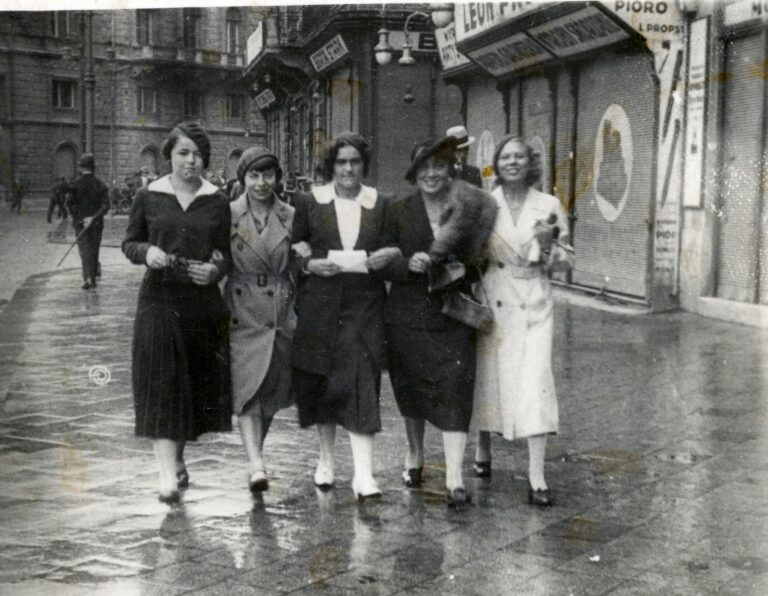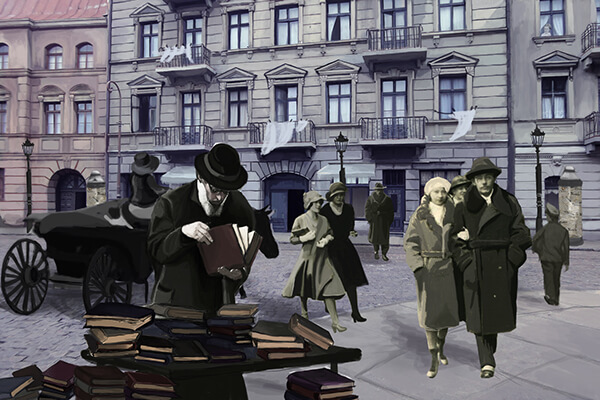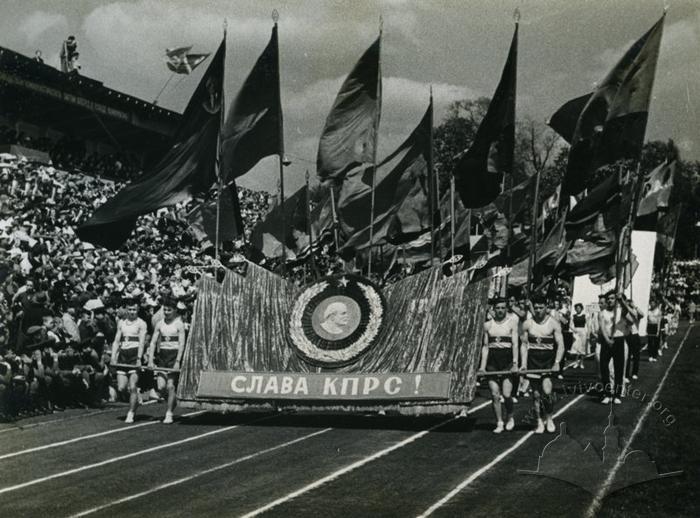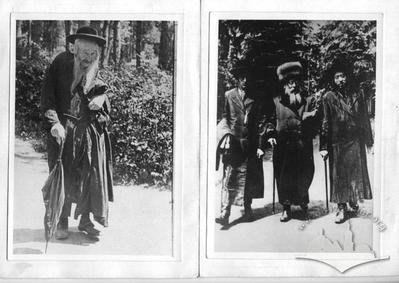1910s
Primary Sources
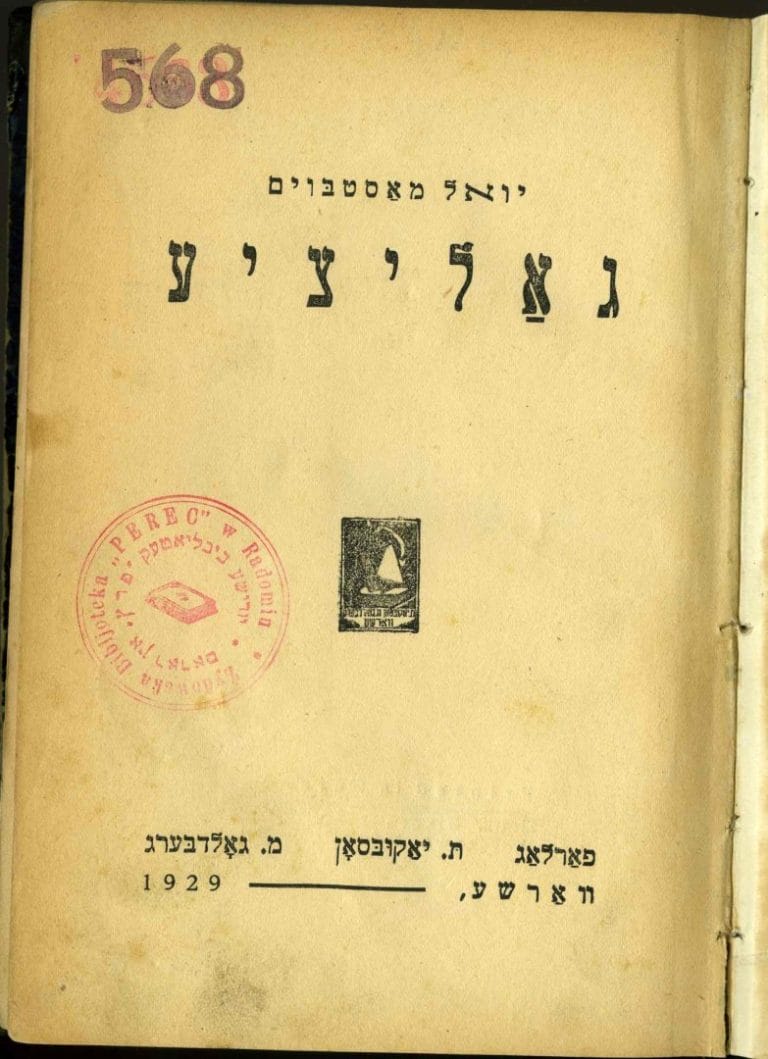
Boryslav mining workers in the late 19th and early 20th centuries
Comment is caming

Sofia Rusova’s Memories on Ukrainian People’s Republic
Sofia Rusova's book “My Memories” was published in Lviv in 1937. The extract presented below covers the period of her participation in the Ukrainian Central Rada (representative institution of the political, social, cultural, and professional organizations, later to be the Revolutionary Parliament of Ukraine, that run the Ukrainian National Movement) with a wide range of political life in Ukraine at that time.

Nestor Makhno on Ukraine in late 1910-1920s
Nestor Makhno’s essays “The Great October in the Ukraine” and “A Few Words on the National Question in the Ukraine” were written in 1926-1927 during his exile. In Paris, where many Ukrainian and Russian political emigres ended up, the community of anarchists organized around the Maknovist movement established the Delo Truda anarchist journal, for which these essays were written. The group was reflecting upon the failure of the anarchist movement and the reasons for Bolshevik’s success among the working masses. One of the main reasons was thought to be the lack of coherent organization, hence this group aimed to produce a set of theoretical and tactical positions for coordination and organization, which would...
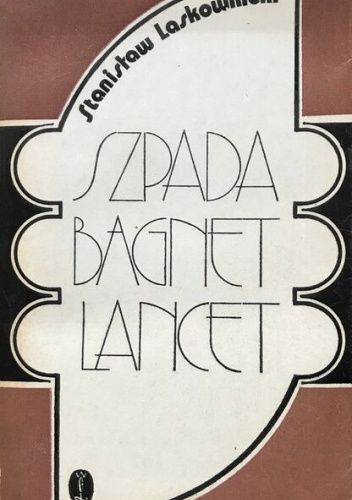
Stanisław Laskownicki on the Work of Lviv Journalists and Publishers at the Turn of the 19th and 20th Centuries
Stanisław Laskownicki (1892-1978), the first Polish professor of urology, stands out as one of the most intriguing memoirists chronicling Lviv. Born into a family of esteemed Lviv journalists, he possessed an extensive knowledge of the city’s notable figures and the inner workings of various editorial offices. Additionally, with a diverse range of interests, he offered insights into the leisure activities of Lviv’s youth, including sports, duels, and academic pursuits. His memoirs, titled Szpada, bagnet, lancet were published in two editions in 1970 and 1979. The excerpts provided here illuminate Lviv’s daily newspapers, recount typical anecdotes from the lives of journalists and their friends and shed light on the founding and evolution of the...

“The sorrowful 14th year has come”, Ukrainian song about the First World War
This source is a folklore text representing the developments of the First World War. Katria Hrynevycheva (1875-1947), a writer, public activist, head of the Ukrainian Women's Union (Soiuz Ukrainok), recorded a variation of the song in the city of Gmünd (Lower Austria), during her stay in the war refugees displacement camp. The recording was found in the archives of Volodymyr Hnatiuk. It is probably that Hrynevycheva was motivated by Hnatiuk’s call to document war-inspired pieces (see below the entry on “War and Folk Poetry”) and her personal story as a mother of two volunteer combatants from the Legion of Ukrainian Sich Riflemen (USR, Ukrainian National Military Formation within the Austro-Hungarian Army). The camp...
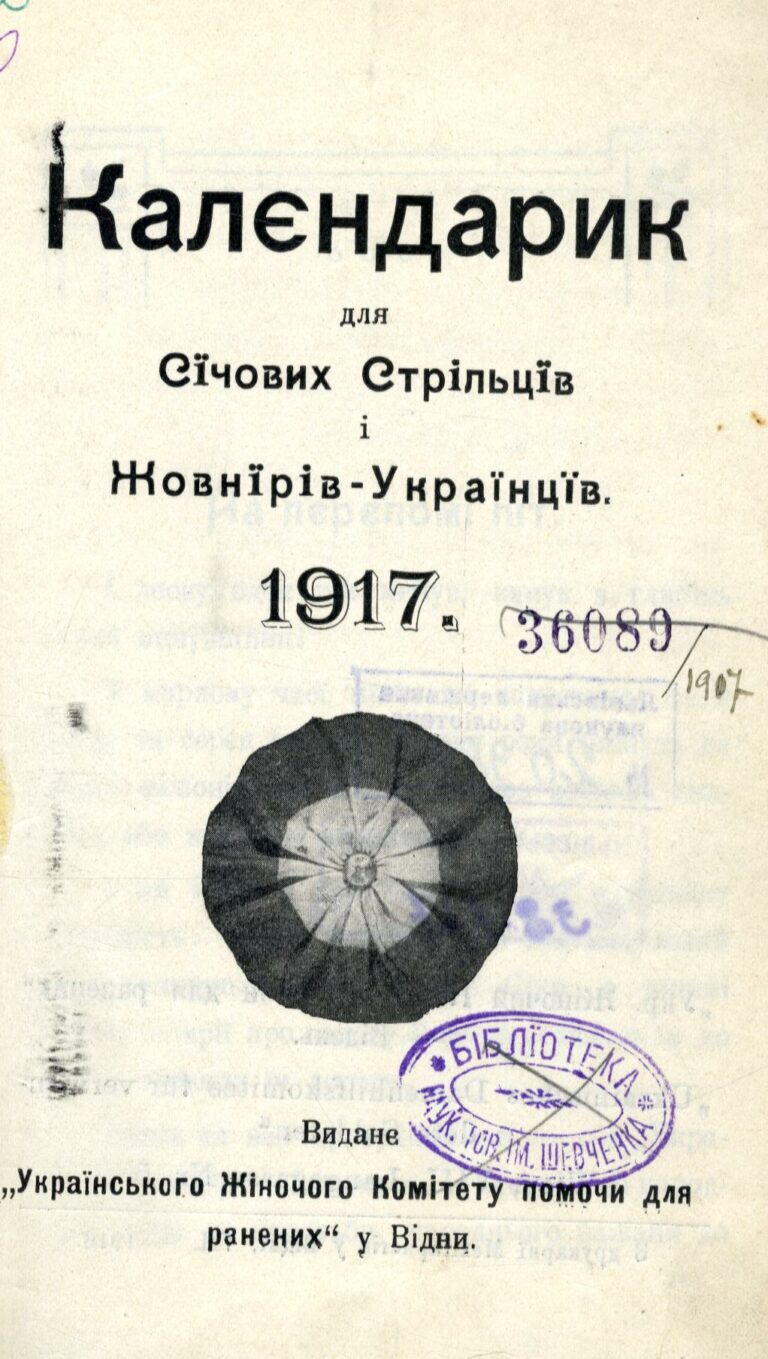
“War and Folk Poetry” by Volodymyr Hnatiuk, 1916, еxcerpt from the article
Volodymyr Hnatiuk is a public and cultural activist, the first professional Ukrainian studies scholar in Halychyna during the First World War. He published a seminal article that included three parts: and then analytical introduction, an appendix with the text of different genres, and a questionnaire illustrated below. The experienced ethnographer and the folklore researcher raised an issue about the pertinent need to record war related folklore. He believed that oral speech actively responds to every critical historic social phenomenon, and the new creativity from the war is also a crucial information and propaganda source. Hnatiuk emphasized that the key task is to identify the popular view on the war, the attitudes to the...
Show more
Collapse all

“Jewish Grandmother”, photo by Lewis Hine
Lewis Hine (1874-1940) was an American photographer who tried to draw attention to social issues such as migration or child labor. He took two series of photos on Ellis Island, an island near New York City that was the first stop and gateway for new arrivals. Photos of Lewis Hine are trying to show the identity of migrants, who were often exoticized and othered in the American press. The Jewish woman in the photo is dressed in clothes that do not distinguish her from other migrants from Eastern Europe. However, although Jewish migration was often also motivated by economic motives, in the public discourse and historiography of the early twentieth century, it was...
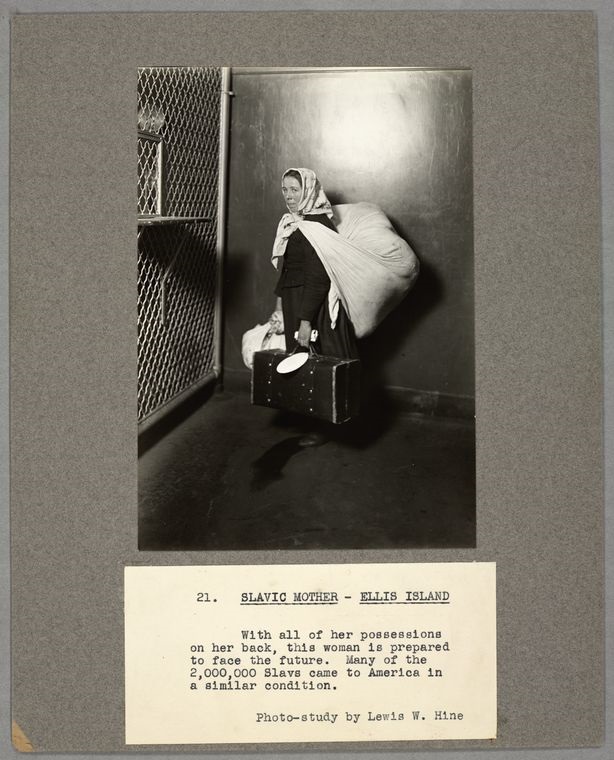
“Slavic Mother”, photo by Lewis Hine
Lewis Hine (1874-1940) was an American photographer who tried to draw attention to social issues such as migration or child labor. He took two series of photos on Ellis Island, an island near New York City that was the first stop and gateway for new arrivals. Photos of Lewis Hine are trying to show the identity of migrants, who were often exoticized and othered in the American press. The name of the photo "Slavic Mother" shows that Eastern Europe for Americans was still a space, which differences and nuances they hardly noticed. Hine perceives the woman in the photo as a person who left Europe forever, taking along all her posessions, and having...
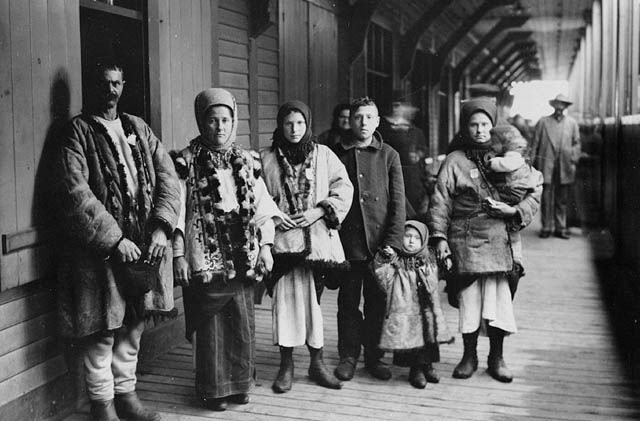
Galician Migrants, Quebec, about 1911
The photo shows a group of migrants from Galicia, probably Ukrainians in Canada. Despite the information that before emigration, peasants bought urban clothes, in this photo we see people in traditional attire, which is different from the Canadian environment. Attitude towards Eastern European migrants was arrogant. In particular, clothing would often become the basis for otherness. Thus, the process of successful integration involved “dressing up” in Western clothes. In the photo, we can see a large family, because often the first migrants who were young men and women, later transported their children or older parents.

“Oh, in the meadow blooms the red viburnum,” a Ukrainian resistance song
This source is an audio recording of the folk version of the one of the most popular Ukrainian resistance songs. It is known by various titles: “The rifleman’s Anthem,” [Cтрілецький гімн] “The song of the viburnum,” [Пісня про калину] or “Oh, in the meadow blooms the red viburnum” [Ой у лузі червона калина]. The song’s worldwide spread was facilitated by the performance of Andriy Khlyvnyuk, the lead singer of the Boombox band, who on February 28, 2022, the fourth day of Russia’s full-scale attack on Ukraine, sang only the first stanza of the song. His performance on St. Sophia Square in Kyiv led to the emergence of remixes. Among the many performers are...

Legend about the “disguised emperor” during the First World War
This source is the audio recording of the legend about the events of the First World War. The storyline describes an “emperor” who was incognito inspecting his army and its provisions. The prototype for the protagonist is Franz Josef I (1830–1916), the emperor of the Austrian Hungarian Empire. This artistic image shows the elements of naive monarchism. The type of “just and kind” ruler is based on his favorable attitude to Galician Ukrainians, who he took as loyal to the Habsburgs. This social myth about the “loyal troops” consisting of Ukrainians was reflected in the prose but also in songs from the late 19th and early 20th centuries. Our emperor is getting old...
The end of the 19th century through the beginning of the 20th century is known as the period of mass migration from Europe to other continents, when more than 55 million people changed their place of residence. In particular, this process captured the Russian and Austro-Hungarian empires, where a difficult economic situation, job shortages, and persecutions stirred various groups of the population to leave. Such groups included both Ukrainian and Polish peasants, and Jews from urban centers who were small-scale craftsmen or workers. Most often, they moved to the United States, Canada, Argentina, and Brazil, where labor was needed at factories or farms.
The "The City as a Stage: When Politics Takes to the Streets" project focuses on mass events in the public space of Lviv during the Habsburg period, which took place in the open air – on the streets and squares of the city. As the political center of Galicia, the "royal capital city" of Lviv was simultaneously considered the "capital of the freest part of Poland" and the "capital of Prince Lev." Political and national confrontations were concentrated here. Although the population of Lviv at that time consisted mainly of Poles and Jews, followed by Ukrainians, it was the competition between Ukrainians and Poles that was most significant. These two groups declared their...
The three stories presented in this text are dedicated to three different women united by one city. Sharing a common urban space, they experienced it in different ways, given their different social positions, status and starting opportunities. The time in which they had to live their lives was in one way or another reflected in microstories from the life of each of these women. The first story is dedicated to Maria Hrushkevych, a long-time employee of the Lviv post office, who was among the "first" women employed by the state. In the second, Maria Linchak will be talked about, who was a maid in the house of Teofil and Liudmyla Hrushkevych, a chorister...
In the last decade, the Ukrainian parliament has issued two laws outlining the legal framework for dealing with the Russian imperial and Soviet past. These laws have sparked numerous scholarly debates on how to address the imperial past, Ukraine's status as part of the Romanov Empire and the Soviet Union, and what to do with the cultural products created over the centuries. This course aims to explore the Soviet legacy in present-day Ukraine and provide students with the necessary theoretical and methodological tools for studying, researching, and writing about Soviet history and culture. The implications for modern Ukrainian identity and politics, particularly in the context of the ongoing war with Russia, will be...
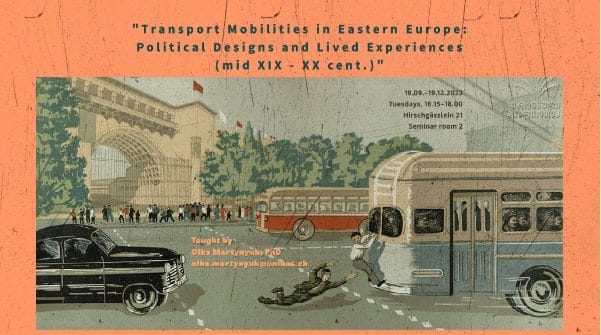 Transport Mobility in Eastern Europe: Political Designs and Lived Experiences (mid XIX – XX Century)
Transport Mobility in Eastern Europe: Political Designs and Lived Experiences (mid XIX – XX Century)
The course invites to explore East-European History of mid XIX - late XX cent. through the concept of mobility, which encompasses movement of people, goods and ideas. Students will deal with a corpus of texts on social history of transportation, as well as with a rich array of visual materials. Of special interest will be cases, specific to the region, for example cultures of Christian and Muslim pilgrimage, Socialist rallies, trolleybus infrastructures or “destalinization” of metro stations. Cases of imported western technologies will provide ground for interregional comparisons, not only in aspects of introduction of transport system, but also in aspects of their exploitation and disintegration. The course is built on a premise...
The course invites to look at the history of Soviet Ukraine from the perspective of its everyday practices. Using many visual sources from 1922 to 1991, students will explore daily routines, housing, clothing, transportation, leisure, and music consumption in urban and rural settings. Periods of peace, war, and crisis will receive equal attention so that one can see how global developments were experienced on a microlevel. Students will explore how maintaining everyday objects and personal habits was essential for building personal safety in different historical contexts. The everyday histories of Soviet Ukraine will also provide a deeper insight into the standard historical narratives about East-European societies, particularly their dialogue with the global society...
East-Central Europe played a vital role in the global history of mass migration and experienced an enormous variety of mobility processes in the long 19th and short 20th centuries. For instance, mass emigration from the Russian and Austro-Hungarian Empires and the Soviet Union, human trafficking, labor migration, forced migration during WWI and WWII, refugee crises and asylum, travel, and professional mobility. The voluminous scholarship on this chapter of migration history has lots of gaps and, notably, is almost absent from history curricula. This introductory course broadens our lens to examine the role of migration and mobility for the places where it occurred as well as the experiences of migrants, displaced persons, refugees, and...
This lecture course comparatively and transnationally investigates twentieth-century communism as a modern civilization with a global outreach. It looks at the global spread of communism as an ideology, an everyday experience, and a form of statehood in the Soviet Union, Europe, Asia (i.e.Mao’s China), and post-colonial Africa. With the exception of North America and Australia, communist regimes were established on all continents of the world. The course will examine this historical process from the October Revolution (1917) to the Chernobyl nuclear disaster (1986), which marked the demise of the communist state. The emphasis is not just on state-building processes or Cold War politics but primarily on the social, gender, cultural and economic policies that...
The course explores the history of Russia as an empire from Peter I up to now in the methodological perspective of the new imperial history. What are the historical preconditions and sources of Russian imperialism and militarism? How did the small principality of North-Eastern Europe manage to create the largest empire in the world? To what extent the Russian Empire of the 18th and 19th centuries differed from European colonial empires as well as eastern imperial polities such as Ottoman Empire and China? How did the imperial nationalities policies emerge and evolve? What role did the competition between "great powers" play in turning Russia into an empire? The course attempts to answer these...
The field of social history has achieved the edge of its popularity in 1950-1980s. It was strongly connected with other disciplines, such as economics, demography, sociology, and allowed historians to reach a much wider range of research themes. Since the 1960s, the social history of the Jewish people became important and influential part of the studies. Historians were exploring the possibilities to study Jewish community with new tools and integrating different representatives of Jewish community – workers, women, immigrants, criminals - in a research. Since 1990s historians of Jewish past shifted their interest to cultural studies. However, in the last years, we can see an economic turn, which signifies the search for a...
The aim of the course is to get to know how to analyze examples of visual culture, including: fiction films and documentaries, video, photography. Both contemporary and historical materials will be studied, together with theoretical texts and publications (from the area of film and media studies, anthropology, cultural studies and history. Although images are mostly seen, if you want to really know them and understand them really well, you must not only "see" them but also "read" them, that means to analyze them as a complex message/ text. That is why at our course we will firstly discuss some terms and categories, that would help us to read images such as: composition, convention,...
This course forms a part of Jewish History and Culture of East Central Europe in the 19th-20th Centuries summer school. The syllabus is availible only in Polish.
This course was a part of Jewish History and Culture of East Central Europe in the 19th-20th Centuries summer school. The syllabus is written in Polish.
The course aims to discuss the major military conflicts of the twentieth century from a gender perspective. In doing so, the course covers the history of global and local wars in a wide variety of regions, including Europe, Africa, and Asia. However, rather than surveying a vast number of military conflicts, we will use a case study approach to conduct in-depth analyses of external and internal dynamics of military encounters and the role of gendered violence during them.
In our mini-course we will explore cultural interaction between Jews and non-Jews (Ukrainians, Poles, Russians) in the borderlands of the Habsburg and Romanov empires. This is interaction that may have been conscious or unconscious, and may have involved encounter, appropriation, negotiation, exchange and destruction.
The course intends to show the possibilities afforded by applying the gender (cultural sex) perspective in the study of Jewish culture. Proceeding from the analysis of the role of the woman and man in traditional Jewish society, we will present gender difference in the process of modernization among Jewish women and men. In looking at autobiographical materials, we will trace characteristic stages and stories, as well as life’s choices of Jewish maskilim (advocates of Haskalah, the Jewish Enlightenment). We will use the examples of the life and work of Pua Rakowska (known as "the Grandmother of Zionism") and Sara Szenirer (reformer of the traditional education system of Jewish girls) to analyze the problem...
When the well-known German author Alfred Döblin visited Lviv in 1924 he wrote: “Lviv is a lively, medium-sized, western, modern town; its streets are peaceful and bustling with life. But suddenly something strange confronts me. This city lies in the arms of two enemies, each of whom wants to dominate it. Subterranean enmity and violence are fermenting in the background”. Döblin, the son of assimilated German Jews from Stettin, also commented on the undercurrent of antiSemitism and voiced his fears, especially for the many poor Jews living in the city. (Alfred Döblin, ReisenachPolen).
This short course looks at Jewish history in the context of two multinational empires: the Russian and the Habsburg. Both of these states must be understood as fundamentally pre-modern, non-national (even anti-national) political structures, a fact that is crucial for understanding Jewish history here. In the mid-19th century, the great majority of world Jewry made its home in this region and even at the end of the First World War, after the great wave of emigration to the Americas, western Europe, Erets Israel / Palestine, and South Africa, the Jewish presence here was considerable. In 1918 even antisemites could hardly imagine a Warsaw, Wilno, Lwów, Odesa (etc.) without Jews.
Our main focus in this class will consist in Jewish experiences with cities in the twentieth century. Geographically, our center of attention will be Central and Eastern Europe (with our main – but not exclusive – emphasis on territories that, at one point or the other, came under Soviet rule); chronologically, we will concentrate (unevenly) on the period between the end of the First World War and the end of the Soviet Union. In particular, the Holocaust and the Second World War were events of central and terrible importance for this period and area. Accordingly, we will pay special attention to them.
Ukraine’s twentieth century was tragically marked by much politically motivated violence and authoritarian regimes as well as movements, from the radical left and the radical right. These forces and events did not only do great harm in the past but left memories and legacies that are still challenging to contemporary Ukraine. In this class, we will focus on several key issues of history, memory, and politics. The readings cannot be exhaustive. Instead, our aim is to read and discuss a sample of important short texts that allow us to reflect more broadly on the underlying questions.
This course was a part of Jewish History, Multiethnic Past, and Common Heritage: Urban Experience in Eastern Europe summer school (July 13 – August 7, 2015. Center for Urban History. Lviv, Ukraine).
This course is devoted to the analysis of representations of Ukrainian territory as a multicultural space during the "long" revolutionary period of 1917-30. We will examine different types of representations (scholarly papers, memoirs, plays, films, stories) and the features of the coexistence of ethnic communities in different parts of Ukraine and at different stages of the revolutionary period. Our overall aim will be to try to forget the familiar narrative of the "Ukrainian Revolution" and "national liberation struggle" and explore the diversity of historical materials and representations, which are not included in the narrative. By studying the events from nearly a century ago, we can better understand the events of 2014.
This course was a part of Jewish History, Multiethnic Past, and Common Heritage: Urban Experience in Eastern Europe summer school.
This course forms a part of Jewish History, Multiethnic Past, and Common Heritage: Urban Experience in Eastern Europe summer school. The syllabus is available only in Polish.
This course forms a part of Jewish History, Multiethnic Past, and Common Heritage: Urban Experience in Eastern Europe summer school.
The course will cover the major development of the East European Jewry from the mid-eighteenth century till the present. More specifically, it will focus on the apparently largest category of modern Jewish history, i.e. modernity itself. The course will start with the discussion of what modernity means in contemporary scholarly discourse, and—more specifically—how it is applied today in historiography of East European Jewry. This introduction will provide a frame for the focus of the course: the analysis of the changing life patters and differing strategies of adopting, rejecting, or negotiating modernity in every-day lives of East European Jews.

